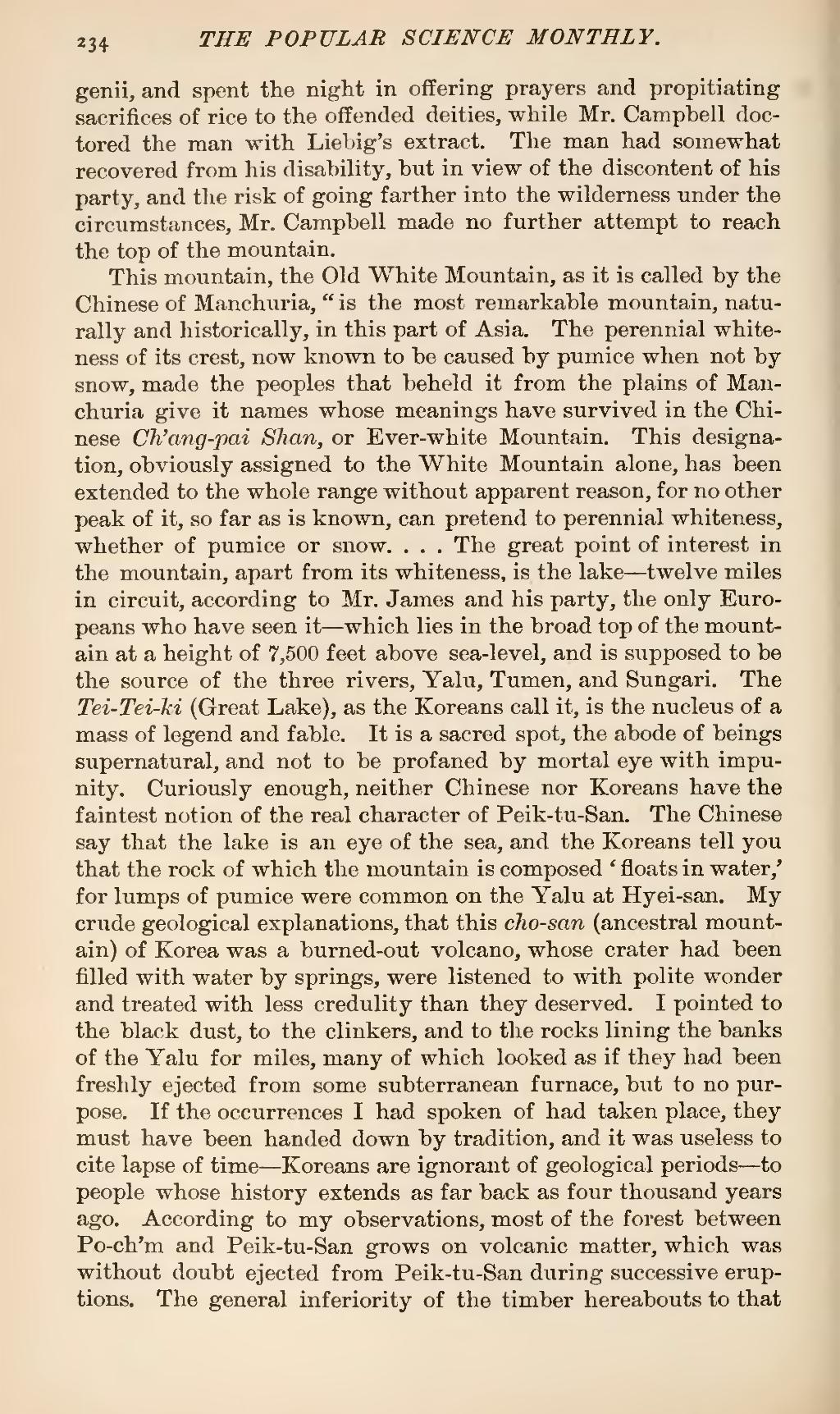genii, and spent the night in offering prayers and propitiating sacrifices of rice to the offended deities, while Mr. Campbell doctored the man with Liebig's extract. The man had somewhat recovered from his disability, but in view of the discontent of his party, and the risk of going farther into the wilderness under the circumstances, Mr. Campbell made no further attempt to reach the top of the mountain.
This mountain, the Old White Mountain, as it is called by the Chinese of Manchuria, "is the most remarkable mountain, naturally and historically, in this part of Asia. The perennial whiteness of its crest, now known to be caused by pumice when not by snow, made the peoples that beheld it from the plains of Manchuria give it names whose meanings have survived in the Chinese Ch'ang-pai Shan, or Ever-white Mountain. This designation, obviously assigned to the White Mountain alone, has been extended to the whole range without apparent reason, for no other peak of it, so far as is known, can pretend to perennial whiteness, whether of pumice or snow. . . . The great point of interest in the mountain, apart from its whiteness, is the lake—twelve miles in circuit, according to Mr. James and his party, the only Europeans who have seen it—which lies in the broad top of the mountain at a height of 7,500 feet above sea-level, and is supposed to be the source of the three rivers, Yalu, Tumen, and Sungari. The Tei-Tei-ki (Great Lake), as the Koreans call it, is the nucleus of a mass of legend and fable. It is a sacred spot, the abode of beings supernatural, and not to be profaned by mortal eye with impunity. Curiously enough, neither Chinese nor Koreans have the faintest notion of the real character of Peik-tu-San. The Chinese say that the lake is an eye of the sea, and the Koreans tell you that the rock of which the mountain is composed 'floats in water,' for lumps of pumice were common on the Yalu at Hyei-san. My crude geological explanations, that this cho-san (ancestral mountain) of Korea was a burned-out volcano, whose crater had been filled with water by springs, were listened to with polite wonder and treated with less credulity than they deserved. I pointed to the black dust, to the clinkers, and to the rocks lining the banks of the Yalu for miles, many of which looked as if they had been freshly ejected from some subterranean furnace, but to no purpose. If the occurrences I had spoken of had taken place, they must have been handed down by tradition, and it was useless to cite lapse of time—Koreans are ignorant of geological periods—to people whose history extends as far back as four thousand years ago. According to my observations, most of the forest between Po-ch'm and Peik-tu-San grows on volcanic matter, which was without doubt ejected from Peik-tu-San during successive eruptions. The general inferiority of the timber hereabouts to that
